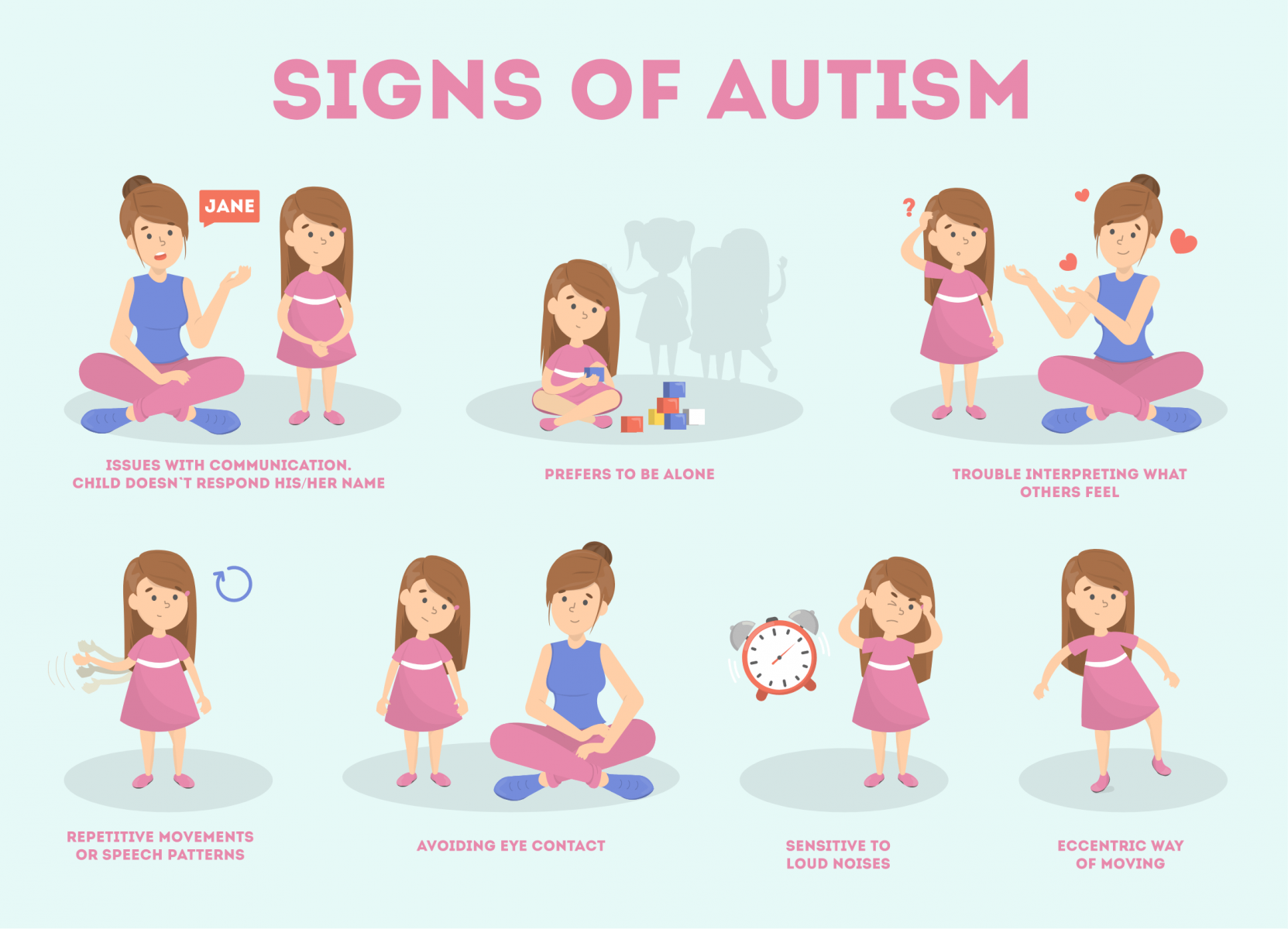Understanding the Range: A Comprehensive Overview to Autism Awareness
Understanding the Range: A Comprehensive Overview to Autism Awareness
Blog Article
Comprehending Autism: A Comprehensive Guide to Symptoms and indicators
Autism Spectrum Problem (ASD) encompasses a broad array of characteristics that can substantially influence an individual's social interactions and everyday functioning. Recognizing these subtleties not just aids caregivers and educators in offering proper assistance yet also fosters a more inclusive atmosphere for individuals with ASD.
Introduction of Autism Range Problem
Specifying Autism Range Problem (ASD) entails recognizing it as a complex neurodevelopmental condition characterized by a variety of challenges in social interaction, communication, and behavioral patterns. The term "spectrum" mirrors the wide irregularity in signs and symptoms and their severity, which can vary significantly from one individual to another. ASD generally materializes in early youth, although some people might not get a diagnosis until later in life.
Aspects affecting the advancement of ASD consist of ecological variables and hereditary proneness, although the specific reasons continue to be under investigation. Diagnosis frequently counts on behavioral analyses, as there are no clear-cut clinical tests for ASD. Early intervention is important and can substantially improve outcomes, concentrating on enhancing interaction abilities, social interactions, and adaptive actions.
People with ASD may also exhibit unique toughness, such as phenomenal focus to information or particular areas of know-how. Comprehending the multifaceted nature of ASD is crucial for promoting an inclusive atmosphere that accommodates neurodiversity. Proceeded research is crucial for developing efficient interventions and support group, enabling individuals with ASD to grow and meet their potential within society.
Usual Signs of Autism
Identifying the common indications of Autism Range Disorder (ASD) is crucial for early identification and treatment. These signs can vary extensively in severity and discussion, but particular qualities are regularly observed in people with ASD.
One of the most prevalent signs is a marked difficulty in preserving and developing eye call. People might additionally show minimal interest in social interactions and reveal a choice for singular play.
Sensory level of sensitivities are additionally common; people might panic or underreact to sensory stimuli, such as lights, textures, or sounds. autism. Language advancement can be atypical, with some kids exhibiting delayed speech or making use of language in uncommon methods, consisting of echolalia-- duplicating sentences or phrases heard somewhere else
It is important to note that not every individual with ASD will display all these signs, and the level of these actions can vary dramatically. Early acknowledgment enables for timely support and sources, boosting the lifestyle for those on the spectrum.
Social Communication Challenges
Social interaction obstacles are a trademark of Autism Spectrum Problem (ASD), affecting an individual's ability to involve successfully with others. These difficulties can show up in different ways, including obstacles in starting and maintaining discussions, recognizing social hints, and responding suitably in social interactions.
Individuals with ASD might battle with nonverbal interaction, such as eye call, faces, and body language. This can bring about misconceptions, as their communicative intent might not be properly analyzed by others. They may discover it difficult to comprehend the subtleties of tone and context, which are vital for reliable communication.
In group setups, individuals with ASD may really feel overwhelmed and may not recognize how to join in discussions (autism). They might likewise show irregular conversational patterns, such as monologuing about certain interests without recognizing social reciprocity
In addition, these challenges can lead to social seclusion or troubles in forming relationships, as peers may misunderstand their actions or communication style. Comprehending these social interaction obstacles is important for promoting encouraging environments that promote social abilities growth and enhance the that site high quality of interactions for people on the autism range.
Sensory Responses and sensitivities
Numerous individuals with Autism Range Problem (ASD) experience increased sensory sensitivities that can considerably affect their daily lives. A person with ASD might discover everyday sounds, such as a vacuum cleanser or crowded environments, overwhelmingly distressing, leading to anxiousness or crises.
Sensory processing differences in people with ASD can also influence their capacity to engage in regular tasks and social communications. As an example, a kid that is delicate to touch may resist physical love or prevent certain clothing textiles. A preference for particular textures or tastes can restrict dietary choices and develop challenges throughout mealtimes.
Recognizing these sensory sensitivities is crucial for recognizing the distinct experiences of people with ASD. Recognition of their sensory profiles can foster much better communication and assistance approaches, developing an environment that accommodates their needs and improves their lifestyle. Inevitably, recognizing sensory level of sensitivities is a crucial component of comprehending the wider spectrum of autism.

Supporting Individuals With Autism
Reliable support for individuals with Autism Spectrum Condition (ASD) is crucial for improving their total well-being and cultivating independence. Support approaches should be tailored to satisfy the one-of-a-kind needs of each individual, considering their staminas and obstacles.

Social abilities training can also play a critical function. autism. Involving people in team tasks or role-playing scenarios can enhance their ability to navigate social interactions. Furthermore, it is necessary to enlighten household participants, caregivers, and peers about ASD to foster a inclusive and supportive community
Conclusion
By promoting enhanced communication and social abilities, people with autism can navigate their environments extra efficiently. Eventually, increased recognition and support can considerably boost the high quality of life for those affected by ASD.
Autism Range Condition (ASD) encompasses a vast variety of characteristics that can dramatically affect an individual's social communications and everyday performance.Individuals with ASD may have a hard time with nonverbal communication, such as eye call, facial expressions, and body language.Many people with Autism Spectrum Disorder (ASD) experience enhanced sensory sensitivities that can dramatically influence their daily lives.Sensory handling distinctions in individuals with ASD can additionally affect their ability to involve in see this website social interactions and visit the website regular activities.Comprehending these sensory sensitivities is essential for identifying the distinct experiences of people with ASD.
Report this page